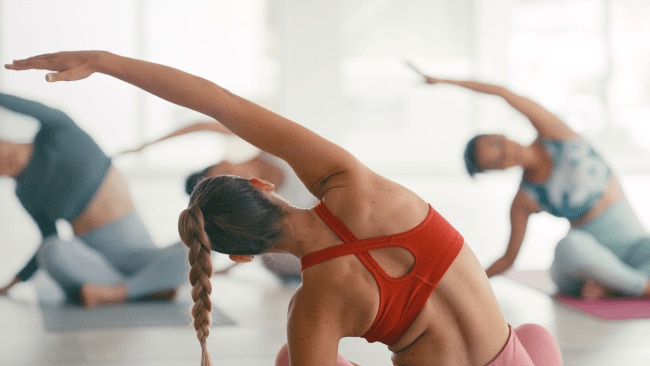Why Gwyneth Paltrow's abs aren't impossible after 50
Because abs aren't age-defying
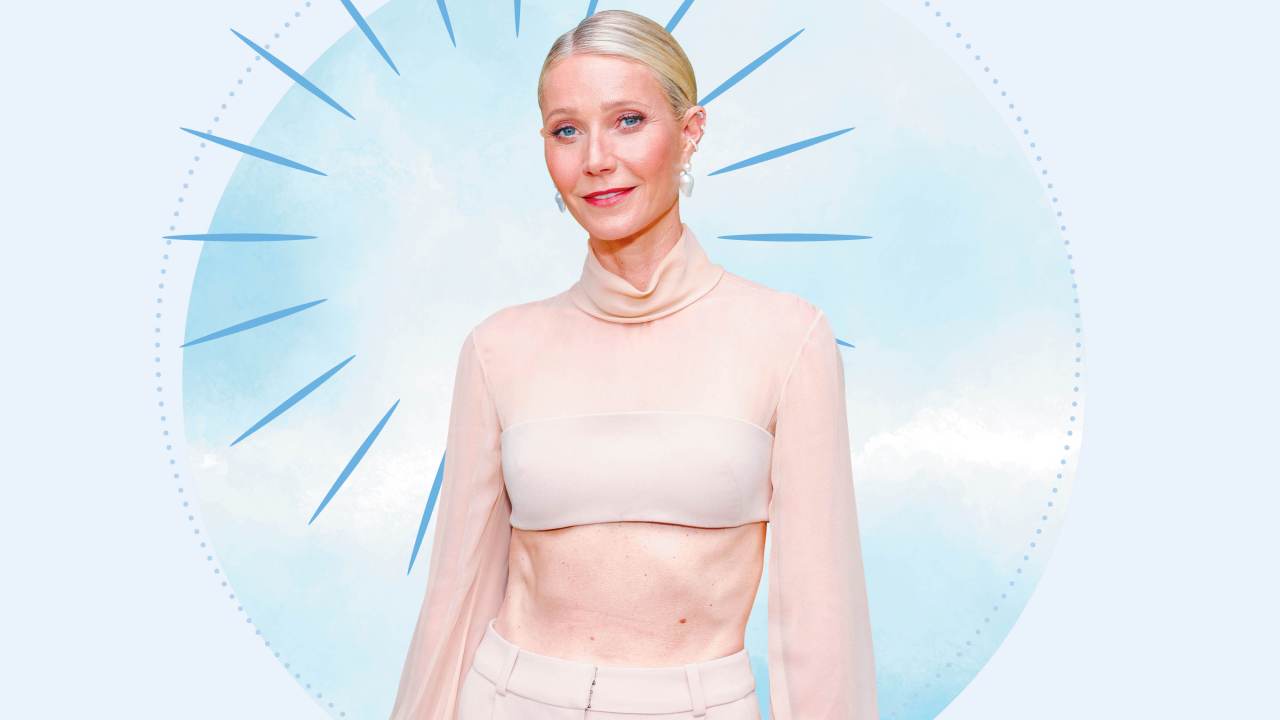
Workouts
Don't miss out on the headlines from Workouts. Followed categories will be added to My News.
Even without the Hollywood budget, it’s possible to tone your core and sculpt a flatter midsection. The only thing you need? These easy-but-effective moves, plus tips from top trainers.
She may have been at The Daily Front Row Fashion Los Angeles Awards to accept a gong for her signature G. Label by Goop clothing line, but it was Gwyneth Paltrow’s abs that stole the show at the red-carpet event in Beverly Hills last month.
Wearing a flesh-coloured crop top with matching trousers, the 50-year-old actress and wellbeing entrepreneur ensured all attention was firmly focused on her core. And who wouldn’t do the same if they looked that good?
Paltrow’s ability to keep midlife belly fat at bay is indeed impressive, but, really, is there any hope that the rest of us mere mortals can emulate her? Getting a physique this ripped doesn’t come easy. Paltrow is notoriously diligent in her approach to ‘clean’ eating and exercise, reportedly working out a minimum of 60 minutes a day, five days a week, most of it under the guidance of her long-time trainer, the go-to celebrity body-sculptor, Tracy Anderson.
Like what you see? Sign up to our bodyandsoul.com.au newsletter for more stories like this.
“I’ve seen all these fads come and go, and nothing works for me the way that Tracy’s approach does, soI really stick with it,” she once told Shape magazine.
Indeed, Paltrow likes Anderson’s techniques so much –which include dance-inspired warm-ups, exercises that work smaller muscles of the body, high repetitions with light hand weights and stretching – that she put her money where her abs are and invested in her company. Still, even without an A-list bank account, there is much you can do to tackle your core. “It is absolutely possible to get a ripped six-pack or visible abs in your 50s and beyond,” says Australian fitness advocate, Sam Wood.
“I personally prefer to focus on function and how I feel, rather than just aesthetics, but for those wanting to see their abs it comes down to two things: training your core properly and having low body fat.
“Training properly doesn’t just mean doing sit-ups and crunches. Your core needs to flex, extend, rotate and stabilise,” adds the trainer and founder of 28 by Sam Wood. “To get lean and have those abs pop, you need to focus on your nutrition and add some cardio to your weight training. The best and most sustainable results are when you take your time and eat lots of protein.”
Even if you won’t be wearing a crop top or bikini anytime soon (hello, winter), your core still deserves attention. Strengthening the muscles that comprise it (trunk, lower back, glutes) will bring benefits well beyond the aesthetic.“Moving beyond how abs look, a strong core is really important. From injury prevention and reducing back pain to improved movement, sports performance and enhanced posture, it all starts with a strong core,” says Wood.
Our core muscles are involved in digestion, so a stronger trunk will improve overall health, too. A variety of deadlifts, planks and kettlebell exercises are a good starting point – flat belly, see you soon.
The workout
1# Deadlift
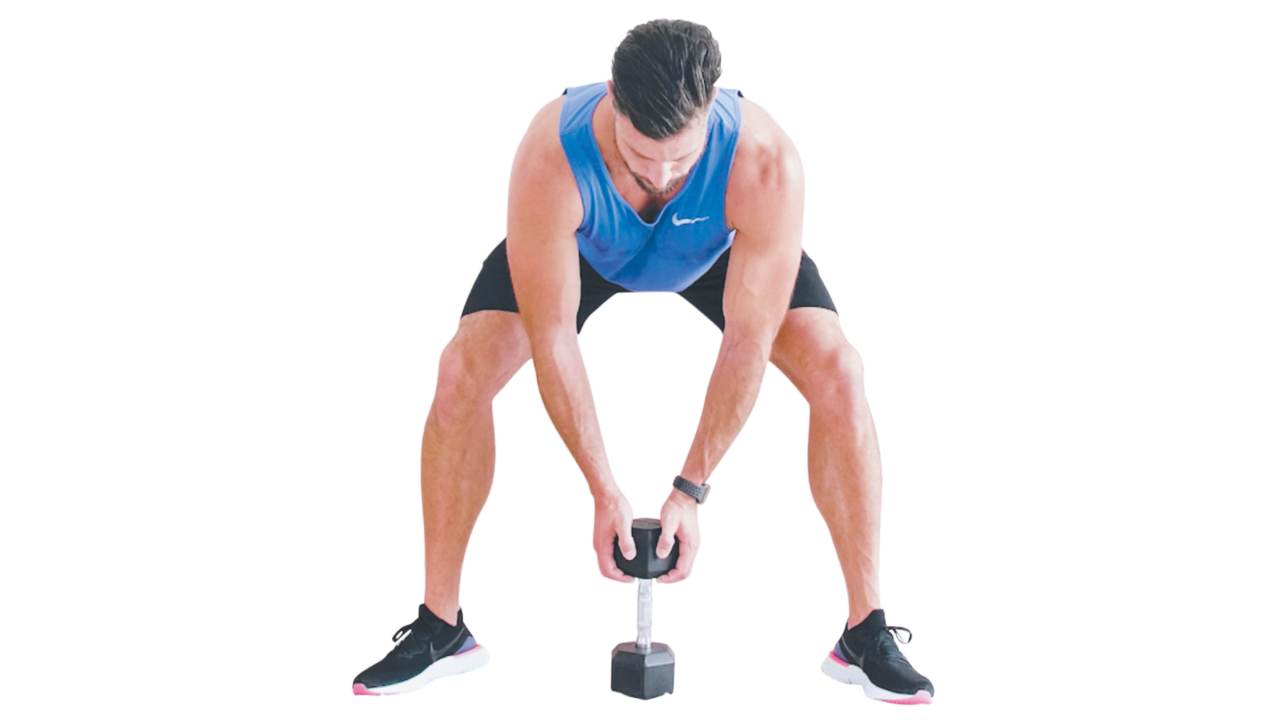
“This is one of my favourite exercises: lifting weight from the ground, keeping your back straight to fire up and build strength in what we call the posterior chain – your hamstrings, glutes and back,” says trainer Sam Wood of the compound exercise. “But as you load the body with added resistance, you realise that deadlifts are great for your core, too.”
To perform a basic deadlift, hold a weight (this can be a kettlebell, barbell or dumbbell) in both hands and have feet slightly wider than shoulder-width apart. Keep your back straight and bend from your hips to reach your arms towards the floor. Engage the glute muscles and hamstrings in the backs of the legs as you pull the weight back up. Do two to four sets of 15 to 20 reps.
2# Single-leg deadlift
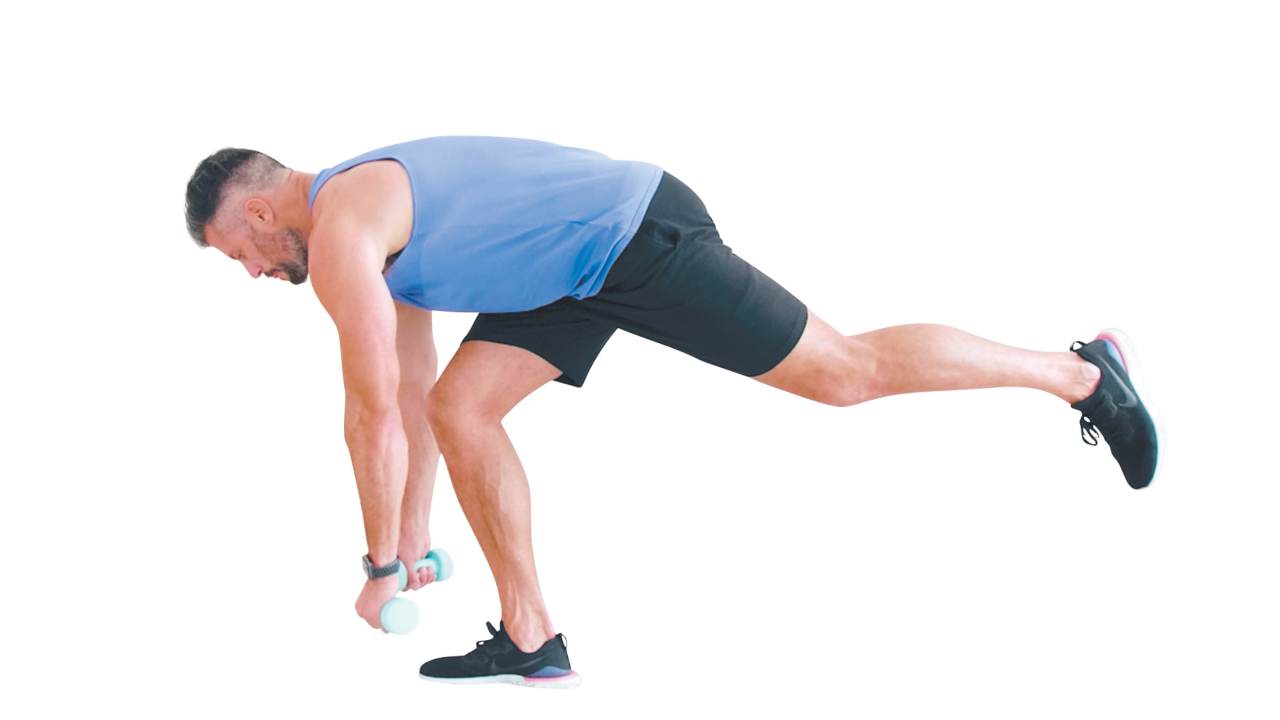
For more instability, therefore a greater challenge to the core, try the single-leg deadlift. Start by standing on your right leg with a kettlebell or dumbbell in your left hand.
Engage the core and lean forward, hips level and back straight, to lower the weight towards the floor while simultaneously raising your left leg straight behind you. At the top of the move your body should form a straight line, parallel to the floor, from head to left foot.
Squeeze the buttock muscles to return to the start position and perform for 15-20 reps. Repeat on the other side and complete two to three sets on each side. “Stabilising your body and holding your form and posture under load is key,” advises Wood. “I like to think of the glutes and lower back as an integral part of this core unit,as they all work together to keep the pelvis and trunk stable and strong.
#3 Kettlebell swing
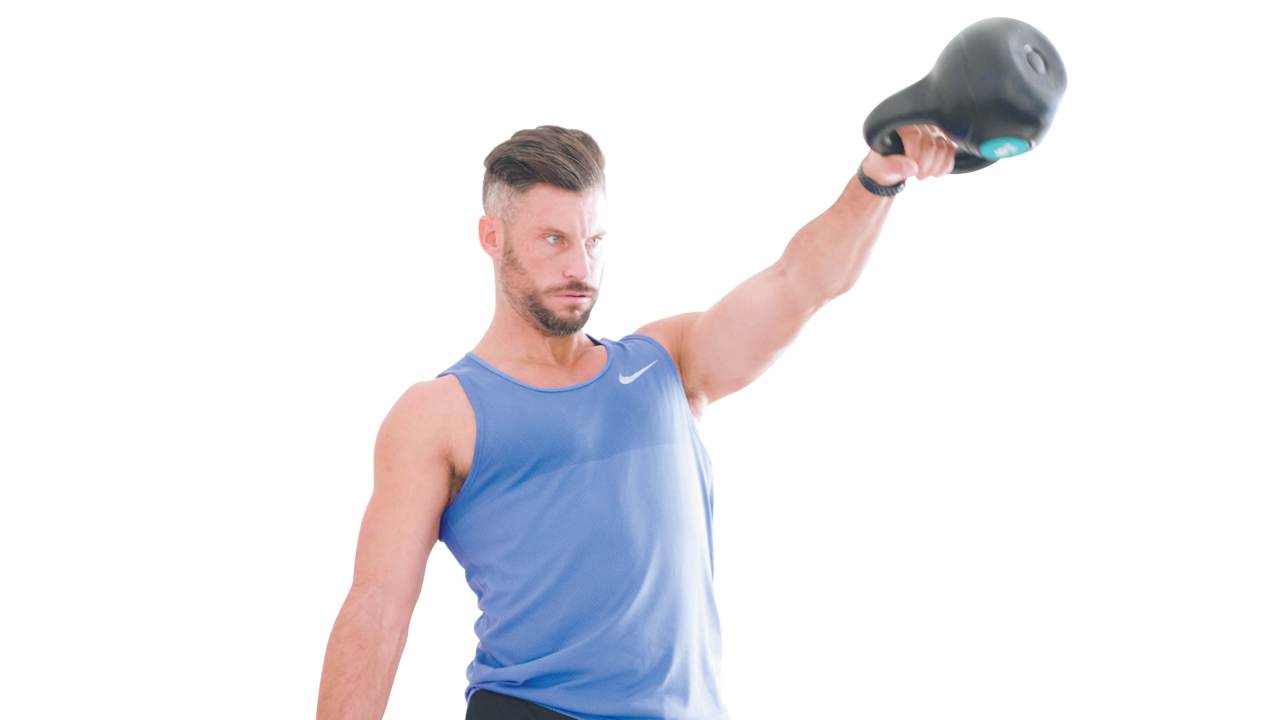
“This is another favourite of mine,” says Wood of the move that works every muscle of the core. “Swings are similar to deadlifts – a hinge movement that fires up your hammies, glutes and lower back. Their ballistic nature, though, means good form is critical. Only add weight if your form stays strong, particularly if you’re fatigued.”
Start with a manageable weight, usually 6-8kg (women) or 12-14kg (men). Stand with feet shoulder-width apart and place a kettlebell a couple of feet in front of you. Hinge from the hips and bend your knees to grab the handle with one or both hands, palms down.
Keeping your back flat, pull the weight between your legs and push your hips forward, pulling the knees back to swing the kettlebell up to shoulder height in front of your body. It’s the legs and hips that should propel the swing – not the shoulders.
At the top of the movement, brace your core before pulling the kettlebell back down between your legs. Repeat 10-15 times for three sets at least three times a week.
#4 Plank up and down

Begin in a raised press-up position with hands positioned beneath the shoulders, arms straight and body in a neat diagonal line from head to feet. Lower onto your left forearm and then lower onto your right forearm. Pilates expert and podcaster, Emma Seibold, founder of Barre Body and Bende, recommends keeping your hips as level as you can.
Reverse the movement, pressing onto your left palm to straighten that arm and then onto your right palm to return to the start position, she says. That’s one repetition. Any variety of plank –standard, side plank, plank dips and raises – are great for core strength. But this move is a staple of Tracy Anderson’s classes and regulars reportedly do up to 30 repetitions.
Seibold recommends doing as many as you can in 45 seconds, alternating between which arm you push up onto first, then doing another two sets
# 5 Dead bug
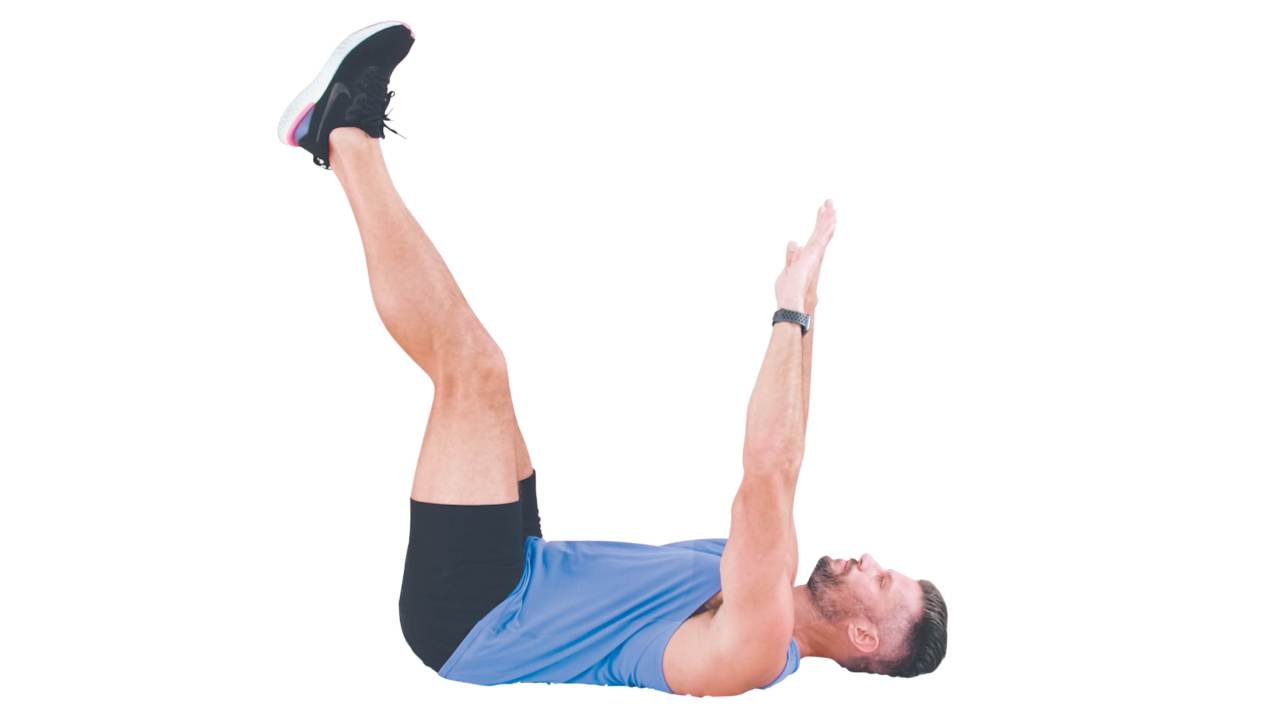
This exercise is found to be far more effective at strengthening the core than traditional crunches in a 2020 study by the University of Nigeria. Lie on the floor with arms extended to the ceiling. Bend knees to 90 degrees and lift your feet off the ground so your shins are parallel to the floor.
Your upper body and thighs should form a right angle. Keeping your lower back on the floor, engage your core and straighten and reach your right arm back to almost touch the floor behind you, as you simultaneously straighten and extend your right leg so your heel almost touches the floor.
Keep your left arm and leg in the start position throughout. Reverse the movement back to the start position, and then repeat on the other side. “Don’t rush this; it should be rhythmic and controlled,” says Seibold. “Try holding light 1kg weights or using wrist weights to add extra resistance once you are strong enough. Aim for 10 repetitions on each side, before taking a break and repeating twice more.”
Originally published as Why Gwyneth Paltrow's abs aren't impossible after 50

